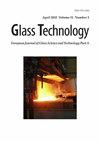加密算法的比较分析
IF 0.3
4区 材料科学
Q4 MATERIALS SCIENCE, CERAMICS
Glass Technology-European Journal of Glass Science and Technology Part a
Pub Date : 2023-01-04
DOI:10.47672/ejt.1312
引用次数: 1
摘要
目的:加密算法允许用户在进行日常活动时将物理世界中的保证扩展到电子世界。本研究试图对两种加密算法(Advanced encryption Standard (AES)和Rivest Shamir Algorithm (RSA))进行比较评估,以确定其在加密时间、解密时间、密钥长度和密码长度方面最可靠。方法:采用Java编程进行开发,mongodb生成数据解析。研究结果:从开发中获得的结果显示,AES被认为更高效,因为它使用更少的加密和解密时间,减少了密码和密钥长度,而RSA需要更长的加密和解密时间,并增加了密码和密钥长度。还使用Excel包来显示这些算法之间比较的图形表示。建议:由于加密和解密时间短,建议基于安全性的应用程序开发人员使用高级加密标准。本文章由计算机程序翻译,如有差异,请以英文原文为准。
Comparative Analysis of Encryption Algorithms
Purpose: Encryption algorithm allows users to extend the assurance found in the physical world to the electronic world in the carrying out of our day-to-day activities. This research attempts to make a comparative evaluation of two encryption algorithms (Advanced Encryption Standard (AES) and Rivest Shamir Algorithm (RSA) in order to ascertain the most reliable in terms of their encryption time, decryption time, Key length, and cipher length.
Methodology: Java programming was used for the development and Mongo Db to generate data parsing.
Findings: The results obtained from the development revealed that AES is considered more efficient because it uses lesser time for encryption and decryption, reduces cipher and key length as compared with RSA which consumes longer encryption and decryption time, and increases cipher and key length. Excel package was also used to display the pictorial representation of the comparison between these algorithms.
Recommendation: Advanced encryption standard is recommended for security-based application developers because of the small time of encryption and decryption.
求助全文
通过发布文献求助,成功后即可免费获取论文全文。
去求助
来源期刊
CiteScore
0.30
自引率
0.00%
发文量
0
审稿时长
>12 weeks
期刊介绍:
The Journal of the Society of Glass Technology was published between 1917 and 1959. There were four or six issues per year depending on economic circumstances of the Society and the country. Each issue contains Proceedings, Transactions, Abstracts, News and Reviews, and Advertisements, all thesesections were numbered separately. The bound volumes collected these pages into separate sections, dropping the adverts. There is a list of Council members and Officers of the Society and earlier volumes also had lists of personal and company members.
JSGT was divided into Part A Glass Technology and Part B Physics and Chemistry of Glasses in 1960.

 求助内容:
求助内容: 应助结果提醒方式:
应助结果提醒方式:


